Study of the Month: December 2020
The elegance of rich, complex, and diverse phenomena emerging from a simple set of universal laws is at least part of what physicists mean when they invoke the term ‘beautiful’.
- Brian Greene, “The Elegant Universe” (1999)
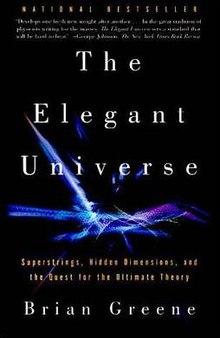 As theoretical physicist Brian Greene describes in this quote, there is something that can elegantly emerge from universal laws that can be called ‘beautiful’ which might be driving our will to explore and discover new things. What is this something? What is it that motivates us? Early psychology that attributed everything to survival and reproduction is clashing with a more spiritual view that attributes a divine origin to humans. Both beliefs however have in common that they acknowledge — albeit giving different reasons why —- that humans are attracted to beautiful things (and if intelligent extraterrestrials exist, their crop circles prove that they are also artists).
As theoretical physicist Brian Greene describes in this quote, there is something that can elegantly emerge from universal laws that can be called ‘beautiful’ which might be driving our will to explore and discover new things. What is this something? What is it that motivates us? Early psychology that attributed everything to survival and reproduction is clashing with a more spiritual view that attributes a divine origin to humans. Both beliefs however have in common that they acknowledge — albeit giving different reasons why —- that humans are attracted to beautiful things (and if intelligent extraterrestrials exist, their crop circles prove that they are also artists).
My personal first moment of beauty in chess came about while reading a book by Laszlo Orban, Schach für Anfänger. In the book — one that I can highly recommend for beginners completely new to the game — basic checkmates are taught, and some obvious observations are mentioned, such as the fact that a rook being unable to win against a rook. I believe that somewhere there also was a game of Sir Thomas vs. Emanuel Sapira from 1932. Somewhere in my head I thought Sapira is the name of a mysterious princess who played against Sir Thomas. Obviously, as a child you make up many stories.
One of the stories didn’t need to be made up. It is the most reprinted endgame study in chess history, and I saw it there for the first time.
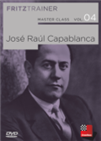 He was a child prodigy and he is surrounded by legends. In his best times he was considered to be unbeatable and by many he was reckoned to be the greatest chess talent of all time: Jose Raul Capablanca, born 1888 in Havana.
He was a child prodigy and he is surrounded by legends. In his best times he was considered to be unbeatable and by many he was reckoned to be the greatest chess talent of all time: Jose Raul Capablanca, born 1888 in Havana.
[It actually should have been “Barbier & Saavedra”].
White plays 1.c7, and his pawn is unstoppable, it seems. So Black gives checks: 1.-Rd6+ 2.Kb5 Rd5+ 3.Kb4 Rd4+ 4.Kb3 Rd3+ 5.Kc2. White wins, right? No, Black has a trick: 5.-Rd4!!
Earlier in the book I had learned that a queen wins against a rook. But here that is not possible, as 6.c8Q? Rc4+ 7.Q:c4 is stalemate. The next move was unbelievable for me.
6.c8R!!
What?! Surely that Orban guy must be crazy! I mean, he tells me earlier that rook against rook is a draw, and now White promotes to a rook? We have the pawnless endgame king and rook against king and rook now. But White threatens checkmate. Black has to defend against it. I mean, just give some check and...oh, right. The rook on c8 protects c4. Ka2 won’t do anything. So 6.-Ra4 defends. Draw. Wait, what is that? There is another move: 7.Kb3!
Checkmate is threatenend again. Black loses his rook. Is this magic?
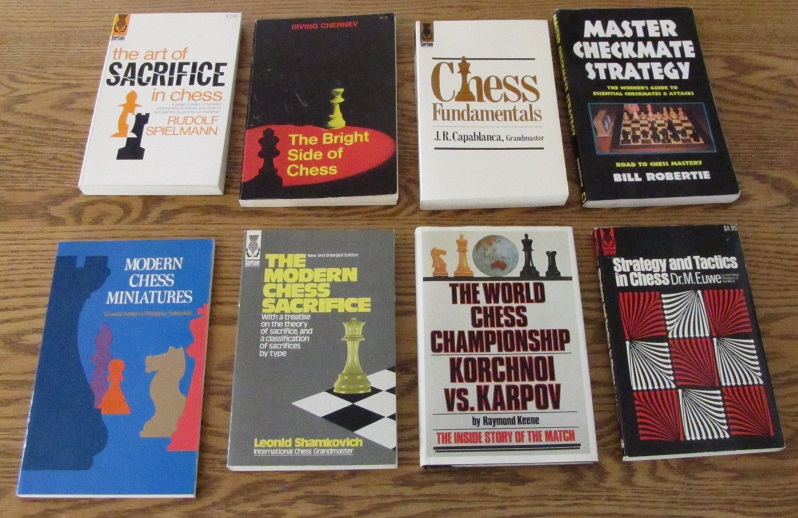
Chess books | Photo: cperspectives.org
Likely all readers know this endgame study. But maybe for a six-year-old boy who just learned the rules, the entire idea of promoting to a rook in a position where it leads to only equal material but still somehow wins was incredible. I had learned checkmating techniques with three knights, with two bishops, with a rook, with a queen, and while I liked the two bishops dominating the board, now I saw real beauty in chess. In that moment something inside me happened. I don’t know how to desribe it, but if I remember correctly at this moment I made a decision, which now, nearly 30 years later, enables you to read these lines. I decided that I wanted to learn chess.
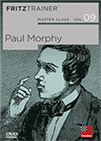 Learn about one of the greatest geniuses in the history of chess! Paul Morphy's career (1837-1884) lasted only a few years and yet he managed to defeat the best chess players of his time.
Learn about one of the greatest geniuses in the history of chess! Paul Morphy's career (1837-1884) lasted only a few years and yet he managed to defeat the best chess players of his time.However, I failed. We all failed. The bitter truth is that chess is too complicated to fully be understood. While we can understand a lot of it, be it ideas or tactics, not everything is comprehensible, especially in some endgames that nearly never appear in practical play (KRB-KNN is an example).
Scientists found that learning is easier when you have an emotional connection with something. This is probably why many people can learn tactics easily — they perceive those combinations are beautiful, but don’t see the same beauty in strategy. For me, one of the earliest “tactics” was this endgame study.
Shortly afterwards, I joined the local chess club. I trained, learned chess. Eventually I discovered the miraculous world of endgame studies. I started composing in 1998, but those abominations got lost somehow on their way to Manfred Zucker, the then problem editor of the German magazine Schach. A few years later, I started using “Fritz 6 Special Edition”, which was on a big German video game magazine as a full version. I composed endgame studies in it, created a database with them, and eventually built some that were worth publishing. Everyone can build a small endgame study from a practical endgame they played, which is something I also sometimes did.
Other fields of chess composition are enjoyable for me to replay or solve. A small challenge is offered at the end of the article, which should be solvable within minutes.
What is it that which motivates me, and others? What is this mysterious thing that is called ‘beauty’? Why do we perceive something as beautiful?

I contacted various people for their opinions, and I will share some of them below (with their permission, except where published works are cited). In addition, I will shortly explain some ideas on how to measure beauty. While this is specific for endgame studies, it should be applicable to other forms of chess — even games. This is further corroborated by Jonathan Levitt and David Friedgood in their Secrets of Spectacular Chess, where their theory of paradox, geometry, flow and depth is demonstrated through many genres of composition as well as practical games. One of them (without their comments) is included in the replayable board below.
 Jan Sprenger (professor of philosophy in Turin) warns about chess, and also chess composition, becoming mainstreamed (via e-mail on 23 November 2020, my translation). He agreed to the publication of the excerpt:
Jan Sprenger (professor of philosophy in Turin) warns about chess, and also chess composition, becoming mainstreamed (via e-mail on 23 November 2020, my translation). He agreed to the publication of the excerpt:
There is more excitement, more enthusiasm for computer-generated lines in the Najdorf than for the game itself, or for thinking on your own. Earlier generations were formed to a much greater extent by the creations of great players (for me, the games of Karpov and Kasparov). Current chess culture is centered around the concept of "Ware" – a hard-to-translate German word that means something between ware, product and merchandise –, be it in the form of ready-to-use opening repertoires, of twitch livestreams, or armageddon playoffs. This preponderance of commercial aspects of chess over the genuine cultural and artistic traits is a big problem, and it is not remedied by the ability to subscribe to specialized journals or to connect with other composers on ARVES or on Sergiy Didukh's blog. In the middle and long run those developments may prevent the next generation from understanding chess (also) as an art, as a game with long culture and history.
Sprenger indirectly, as far as I understand, asserts that the beauty of chess compositions is not enough to get newer audiences to join specialized chess problem societies, or to start composing themselves. He recently started composing endgame studies again after having published one study in 2012 and one in 2018. The latter year also is when he became a GM in practical play (he was an International Master since 2001). His replayable endgame study is one example of his already high skill as a composer, earning him the 2nd honorable mention in the FIDE World Cup, a regular composing tourney by the world chess federation, organized by Andrey Selivanov (who is to my knowledge one of the FIDE Vice Presidents).
Similar to a judicial movie, I will present the evidence (or rather opinions), but will leave it to the readers to decide. Unlike the 12 Angry Men, who by adding their own evidence arrived at a wrong conclusion, you are allowed and even encouraged to find more opinions.
Practical applications of beauty
Jonathan Levitt and David Friedgood write in the second, updated edition of their book Secrets of Spectacular Chess (2008, p.44-45):
To some extent it is possible to create criteria of aesthetic beauty applicable across the range of forms the beauty can take.
[...] Ultimately, chess is its own language. Chess, however, may prove to be a useful testing ground for more general aesthetic theories [...]. Chess, being a closed system, can be clear and testable, which gives it an advantage over many other fields.
They proceed to present their theory that four general concepts are perceived as beautiful in chess: Paradox, Depth, Geometry, Flow. This is abbreviated as the “PDGF theory”. The theory is applicable to practical games as well. It defines the various terms, but they are mostly self-explanatory. I personally would see “depth” more as a “field”, a “rectangle” of depth and breadth, as also is discussed in the book but not entirely. A key that requires one to see 13 variations would thus be around as deep as a key that requires to see 13 forced moves ahead, if those are as difficult to find.
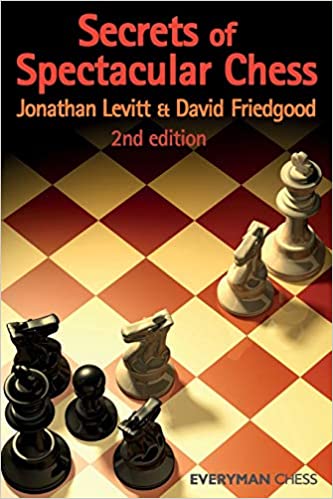 Further considerations are found in chapter 10 of their book, but their foundational philosophical perspective is, in fact, more important:
Further considerations are found in chapter 10 of their book, but their foundational philosophical perspective is, in fact, more important:
Perhaps there are limits to what can be expressed [...], but composition can evoke a wider range of responses than is commonly imagined. I’ve experienced surprise, astonishment, depth, pleasing geometrical patterns, humour and, of course, pleasure just looking at the solutions to positions. Naturally the competitive game can involve a range of other emotions [...].
In chapter 10 they write (p.250):
Ultimately a lot depends on interpretation. What one reader considers deep or paradoxical may be very different from what another reader considers deep or paradoxical (after all these concepts are relative to the reader’s experience).
Two examples, in which I will give more details about the theory, are included in the replayable studies. Levitt and Friedgood also believe that beauty in chess helps in learning.
The chess curiosities composer and collector Werner Keym, who is also the former Mayor of Meisenheim, agrees with Levitt & Friedgood’s article Elements of Chess Beauty (in the abovementioned book) on the general aesthetic observations, and adds that for him chess problems are beautiful when form and content match each other — some chess problems reach him emotionally while others astonish him. On one of Keym’s five favourite endgame studies he quotes Harold Lommer, who said about one endgame study that “it warms the heart”. Keym notes that his 2020 book Anything but Average contains many endgame studies and chess problems he finds beautiful (e-mail by Keym, 16 December 2020).
 In his instructional work Solving in Style, John Nunn, who generally loves the artistic side of chess compositions, does not regard said side, as for the book he looks at them from a solver’s perspective as puzzles. This leads to his observation:
In his instructional work Solving in Style, John Nunn, who generally loves the artistic side of chess compositions, does not regard said side, as for the book he looks at them from a solver’s perspective as puzzles. This leads to his observation:
Chess problems are an unusual art form in that the audience (solvers) have to participate actively, by solving the problem, in order to appreciate the artist’s message. Those who peek at the solutions are missing out on the pleasure and satisfaction gained when the crystal-clear point of the problem is suddenly revealed after an hour’s careful study.
Yours truly would like to add that this requires a curation process in advance, as not every problem or study is suitable for solving. Usually those reprinted in books that aim to select the best compositions will be suitable (although endgame studies might require good knowledge of endgame theory sometimes), but in a magazine that takes all originals some will not lend themselves to such crystal clarity. In such cases, a solver will feel like something is amiss.
If readers want to try experiencing said satisfaction when finding a solution after an hour, this might be a good problem to do so. At first they will want to find out what would happen if Black was to play, and then they can proceed to find a way to react. Hints are at the end of the article — the replayable entries below the article contain the solution.
 Finally, we need to quote Dr. Azlan Iqbal. He sent a small article about his considerations for his software Chesthetica which is aimed at composing aesthetical chess problems and studies, and was presented multiple times in his own articles on ChessBase. The important paragraph for our discussion is the following one, near the end of the short article he sent:
Finally, we need to quote Dr. Azlan Iqbal. He sent a small article about his considerations for his software Chesthetica which is aimed at composing aesthetical chess problems and studies, and was presented multiple times in his own articles on ChessBase. The important paragraph for our discussion is the following one, near the end of the short article he sent:
Philosophically, it would seem that creativity (aesthetics also being a product of it), even the kind typically associated with humanity prior to the age of AI, is not as mysterious as we think. It is a process, not unlike any other, that we have yet to fully figure out, if that is even possible given our limited intelligence. For contrast, we do not even know how to regrow limbs, something many animals have been doing for millions of years. We may never or never choose to solve some of these problems for any number of reasons, but it does not follow from that that these things are not possible. Maybe they are just not worth the investment. It could be as simple as that. While Chesthetica can generate many types of compositions, and I believe even for many chess variants, the main implication of computational creativity is ultimately toward solving far greater and more dynamic problems plaguing humanity. In these lie the true test of what we humans like to call brilliance or creativity.
Further theories of beauty in chess
Alexander George, professor of philosophy at the University of Amherst and founder of a forum for chess problems (where I had a small column many years ago, which became too much work for me, when I was less inclined to write much), was also contacted by me. He referred me to an article by Chris Ravilious from 1994, which is reproduced on George’s forum with permission. The article called The Aesthetics of Chess and the Chess Problem first appeared in The British Journal of Aesthetics, volume 34, number 3 (July 1994): 285 (6). Sadly Christopher Peter Ravilious, who also had been a chess publisher (of at least four club magazines) and historian, passed away in January 2016 (information by Brian Denman, on the English Chess Forum, posted on 31 January 2016). As such, I want to take this opportunity to express my gratitude for the permission he gave to Alexander George in 2007.
The article by Ravilious was in reply to an earlier article by P. N. Humble, who considered the aesthetics of chess games but did not mention compositions. I found Humble’s complete article on Facebook, but don’t know if a permission exists for it, so I can’t link it for legal reasons. However, I can also quote it below.
 P. N. Humble wrote in his article Chess as an art form, in The British Journal of Aesthetics, 31 January 1993:
P. N. Humble wrote in his article Chess as an art form, in The British Journal of Aesthetics, 31 January 1993:
It is a well-established practice to award brilliancy prizes at chess tournaments for the most beautiful game. (This, incidentally, gives institutional recognition to the aesthetic nature of chess.) With this practice in mind the French chess enthusiast, F. Le Lionnais, stipulated seven criteria for judging a game's aesthetic merit.
Humble presents the seven criteria, which include two criteria related to ‘correctness’, one of which is that the combination must be correct (not refuted by the strongest defence); the other criterion considers that the solution must be the most economic way to win. ‘Difficulty’ increases aesthetic value with difficulty. ‘Vivacity’ is another word for expressing the aesthetic value of sacrifices of material. ‘Originality’ should be self-explanatory. ‘Richness’ refers to the view that a combination is more aesthetic if it has more variations. Finally, ‘Logical Unity’ refers to the gameplay prior to the combination, as it should also be harmonious. Humble does not write it, but many of these aspects also apply to chess composition. He gives no own opinion on those criteria, but continues to quote Bronstein and Smolyan (George Smolyan is not to be confused with Raymond Smullyan) in Chess in the Eighties. Their four factors of beauty are the joy of the player, the joy of the audience, the ‘mysterious beauty’ (the authors agree there with the criteria of Le Lionnais), and finally ‘the medium’, i.e. chess being flexible enough to always allow new ideas.
We may on the basis of this define a game of chess as a work of art in terms of necessary and sufficient conditions. A game of chess is a work of art if, and only if, it is (a) produced primarily with the intention of rewarding aesthetic contemplation; (b) exhibits aesthetic features and (c) is unique.
Humble explains his views in detail, and after a lengthy discussion concludes:
We may recap what has been said in reply to the objection that chess is not an art form as aesthetic considerations are at best of secondary importance. I hope to have shown that on the contrary they are of the first importance. I argued that it is wrong to suppose that aesthetic and competitive considerations are somehow incompatible, or that the latter take precedence over the former. I suggested that a game could be appreciated as sporting contest or dramatic spectacle, and that some of our aesthetic judgements refer explicitly or implicitly to the game understood in these ways. Moreover, I claimed that a player's aesthetic judgement could be a crucial factor in determining how well he plays and whether he wins or loses. I referred in this connection to the fundamental importance of aesthetics both within and without chess in order to show that this was not something peculiar to the game.
Chris Ravilious disagrees on several points with Humble, proving that risk does not need to be involved for a player to create a beautiful combination:
Some of the combinations which all chess players agree to be ‘beautiful’ entail no risk at all (since the opponent’s possible replies can be foreseen and are plainly insufficient to save the situation). To select one example from many, the combination by which Capablanca forced Bernstein’s resignation in a match game played in Moscow in 1914 was essentially a single sacrificial coup, to which Bernstein had no good reply.
Bernstein’s defensive task is not easy, as he can’t win the pawn on c3, as he tried: 26.Nb5 Rc5 27.N:c3 N:c3 28.R:c3 R:c3 29.R:c3 Qb2!! and White resigned
I would like to give an interesting further thought to readers: if this happened in a modern internet game, and it turned out that Black just slipped the mouse while trying to give a check on b1, would the beauty of the final move be diminished?
Ravilious continues:
The appearance of risk attaching to Black’s final move in this game is momentary, lasting only so long as it takes the spectator to grasp that the apparently suicidal offer of the queen (the most powerful piece on the board) can neither be accepted nor declined.
He elaborates on replayability:
We experience a repetition of this first delight each time we return to the game, rather as we derive pleasure from repeated hearings of music.
 Ravilious argues that the competitive element is not necessary for enjoyment of beauty. He adds that while ‘speculative’ sacrifices might often be played, they are judged independently of how a move like Capablanca’s would be judged. He does however not write about speculative sacrifices where a draw already is certain, such as in Kotov and Averbakh’s game from Zurich 1953 (replayable at the end of the article).
Ravilious argues that the competitive element is not necessary for enjoyment of beauty. He adds that while ‘speculative’ sacrifices might often be played, they are judged independently of how a move like Capablanca’s would be judged. He does however not write about speculative sacrifices where a draw already is certain, such as in Kotov and Averbakh’s game from Zurich 1953 (replayable at the end of the article).
Ravilious has to be quoted lengthily to understand his point of view:
If chess problems satisfy a need for specifically aesthetic qualities — balance, harmony and concision are three among many — it is at least in part for the very reason that they arise solely from the composer’s contemplative interaction with his raw material (the rules of chess), rather than from the player’s interaction in real time with a human opponent. All else being equal, we should expect the problem composer to arrive at concepts which are deeper, more original and more subtle than those arising in the rhetorical cut-and-thrust of over-the-board play, and this indeed is what we do find. Chess play at the highest level is certainly marked by ‘harmony of form, geometric beauty and expressiveness, and free play of the imagination’, but the pursuit of these qualities by chess masters is secondary to their will to win, just as in a boxing match considerations of ‘style’ are subordinated to the overriding aim of flooring one’s opponent. Among problemists on the other hand aesthetic considerations are paramount. There is no opponent, and hence the problem composer experiences no constraints on the free play of the imagination other than those imposed by the disciplines of the form.
Ravilious points out the difference between practical play and composition:
That a combination developed in these circumstances is beautiful as well as effective represents a triumph for the imagination which moves us powerfully, even though the artistic content of the combination, considered objectively, is of limited interest. But the modern chess problem is very far from being an imitation of any phase of the game: indeed chess players who are not also problemists tend to disparage problems precisely for the reason that they depart so capriciously from the conventions of over-the-board play.
He elaborates on different kinds of composition, such as fairy chess, where non-standard rules or pieces apply, In his further commentary on chess problems, he shows that the concept of “set” play and “try” play (see the threemover by Zepler for how they can be interwoven) are important to a modern chess problem. The story of a novel or the big tune of a symphonic movement are in the same way important as a key move of a chess problem, he argues, but those would only offer a part of the experience. He argues also that Humble’s conditions are fulfilled by chess problems. Ravilious concludes that chess, like music, should be considered a classical art form:
For if the chess problem is an art form it is essentially a classical art form, valuing above all the qualities of harmony, proportion and the subordination of means to ends which are evidenced alike by classical architecture and music.
Both are more abstract and the least referential, he argues. Still they don’t exhibit parity in their status, as chess composition only is a minor art form because its language is limited compared to music. Ravilious believes that formal elaboration and capture of aesthetic effects can be done in a wider range in sonata form than in a two-mover form. However, it is for him a difference in degree rather than kind.
Hint for the threemover by Erich Zepler: There is a set mate for each of the four variations: 1.-Kxg3, 1.-Kxe3, 1.-Ke1, 1.-Kg1. Two variations use the same second (first in the set) move of White. After you found the variations, you know that Black is in zugzwang. But how should White proceed?
Click or tap an entry in the list to switch positions
You probably know that you can move pieces on our replay boards to analyse and even start an engine to help you. You can maximize the replayer, auto-play, flip the board and even change the piece style in the bar below the board.
At the bottom of the notation window on the right there are buttons for editing (delete, promote, cut lines, unannotate, undo, redo) save, play out the position against Fritz and even embed the ChessBase game viewer on your website or blog. Hovering the mouse over any button will show you its function.
Perfect endgame analysis and a huge increase in engine performance: Get it with the new Endgame Turbo 5! This brings the full 6-piece Syzygy endgame tablebases on a pendrive. Just plug it in a USB socket and you are set!

World Federation for Chess Composition (www.wfcc.ch)
Links
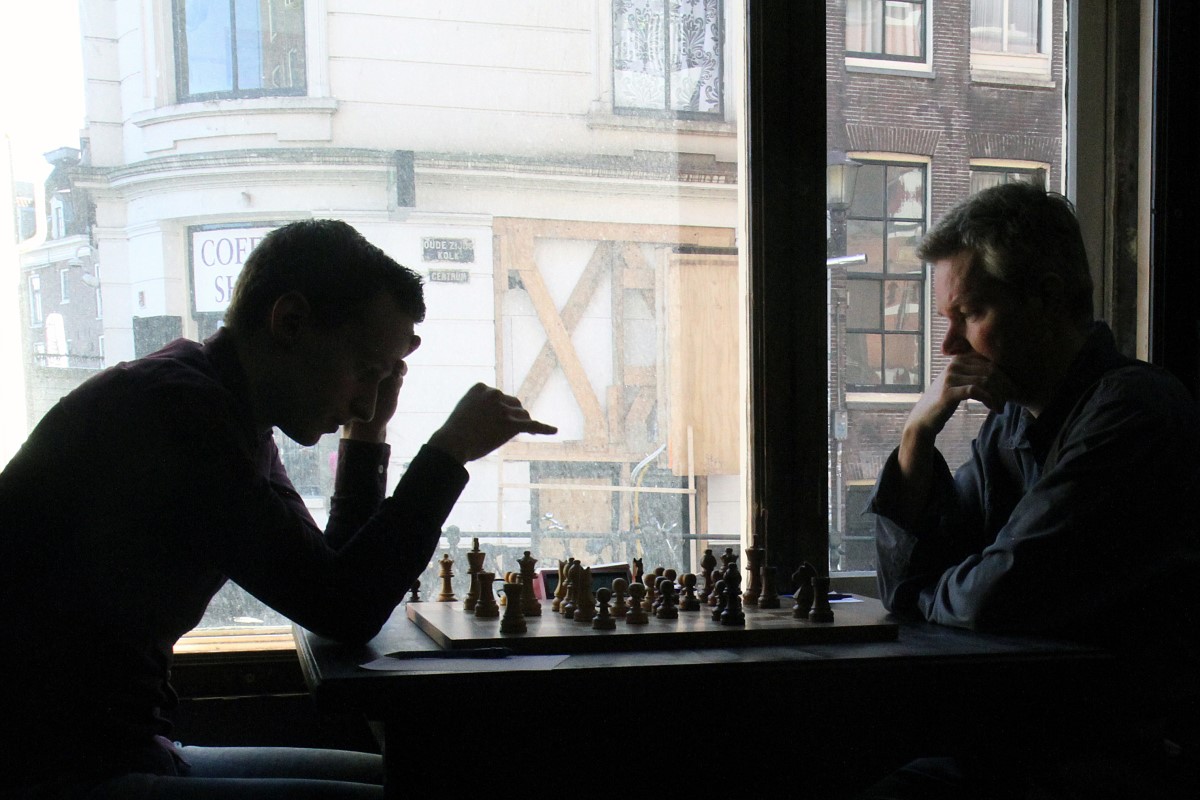

















 As theoretical physicist Brian Greene describes in this quote, there is something that can elegantly emerge from universal laws that can be called ‘beautiful’ which might be driving our will to explore and discover new things. What is this something? What is it that motivates us? Early psychology that attributed everything to survival and reproduction is clashing with a more spiritual view that attributes a divine origin to humans. Both beliefs however have in common that they acknowledge — albeit giving different reasons why —- that humans are attracted to beautiful things (and if intelligent extraterrestrials exist, their crop circles prove that they are also artists).
As theoretical physicist Brian Greene describes in this quote, there is something that can elegantly emerge from universal laws that can be called ‘beautiful’ which might be driving our will to explore and discover new things. What is this something? What is it that motivates us? Early psychology that attributed everything to survival and reproduction is clashing with a more spiritual view that attributes a divine origin to humans. Both beliefs however have in common that they acknowledge — albeit giving different reasons why —- that humans are attracted to beautiful things (and if intelligent extraterrestrials exist, their crop circles prove that they are also artists).

 Jan Sprenger (professor of philosophy in Turin) warns about chess, and also chess composition, becoming mainstreamed (via e-mail on 23 November 2020, my translation). He agreed to the publication of the excerpt:
Jan Sprenger (professor of philosophy in Turin) warns about chess, and also chess composition, becoming mainstreamed (via e-mail on 23 November 2020, my translation). He agreed to the publication of the excerpt: Further considerations are found in chapter 10 of their book, but their foundational philosophical perspective is, in fact, more important:
Further considerations are found in chapter 10 of their book, but their foundational philosophical perspective is, in fact, more important: In his instructional work Solving in Style, John Nunn, who generally loves the artistic side of chess compositions, does not regard said side, as for the book he looks at them from a solver’s perspective as puzzles. This leads to his observation:
In his instructional work Solving in Style, John Nunn, who generally loves the artistic side of chess compositions, does not regard said side, as for the book he looks at them from a solver’s perspective as puzzles. This leads to his observation: Finally, we need to quote Dr. Azlan Iqbal. He sent a small article about his considerations for his software Chesthetica which is aimed at composing aesthetical chess problems and studies, and was presented multiple times in his own articles on ChessBase. The important paragraph for our discussion is the following one, near the end of the short article he sent:
Finally, we need to quote Dr. Azlan Iqbal. He sent a small article about his considerations for his software Chesthetica which is aimed at composing aesthetical chess problems and studies, and was presented multiple times in his own articles on ChessBase. The important paragraph for our discussion is the following one, near the end of the short article he sent: P. N. Humble wrote in his article Chess as an art form, in The British Journal of Aesthetics, 31 January 1993:
P. N. Humble wrote in his article Chess as an art form, in The British Journal of Aesthetics, 31 January 1993: Ravilious argues that the competitive element is not necessary for enjoyment of beauty. He adds that while ‘speculative’ sacrifices might often be played, they are judged independently of how a move like Capablanca’s would be judged. He does however not write about speculative sacrifices where a draw already is certain, such as in Kotov and Averbakh’s game from Zurich 1953 (replayable at the end of the article).
Ravilious argues that the competitive element is not necessary for enjoyment of beauty. He adds that while ‘speculative’ sacrifices might often be played, they are judged independently of how a move like Capablanca’s would be judged. He does however not write about speculative sacrifices where a draw already is certain, such as in Kotov and Averbakh’s game from Zurich 1953 (replayable at the end of the article).





